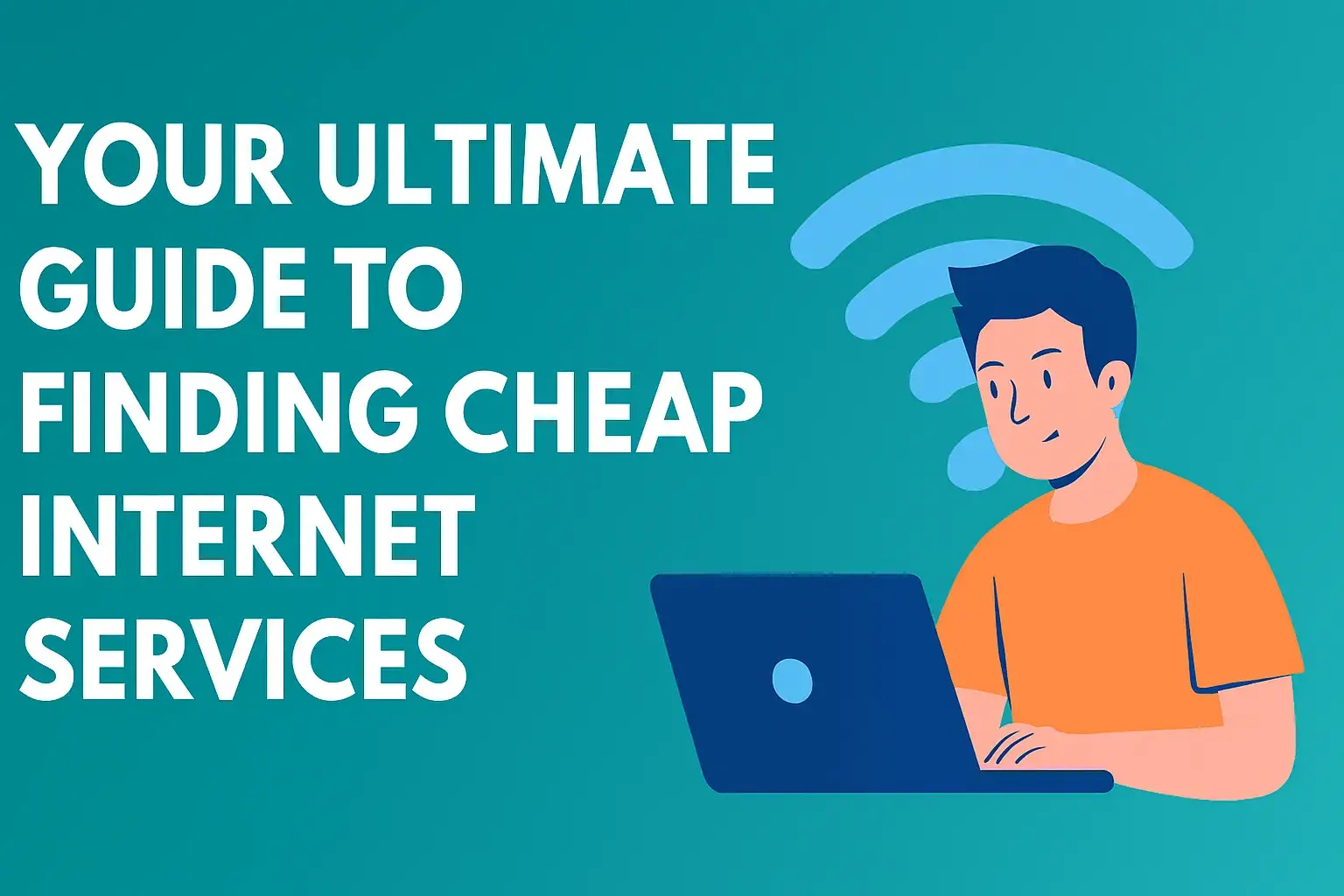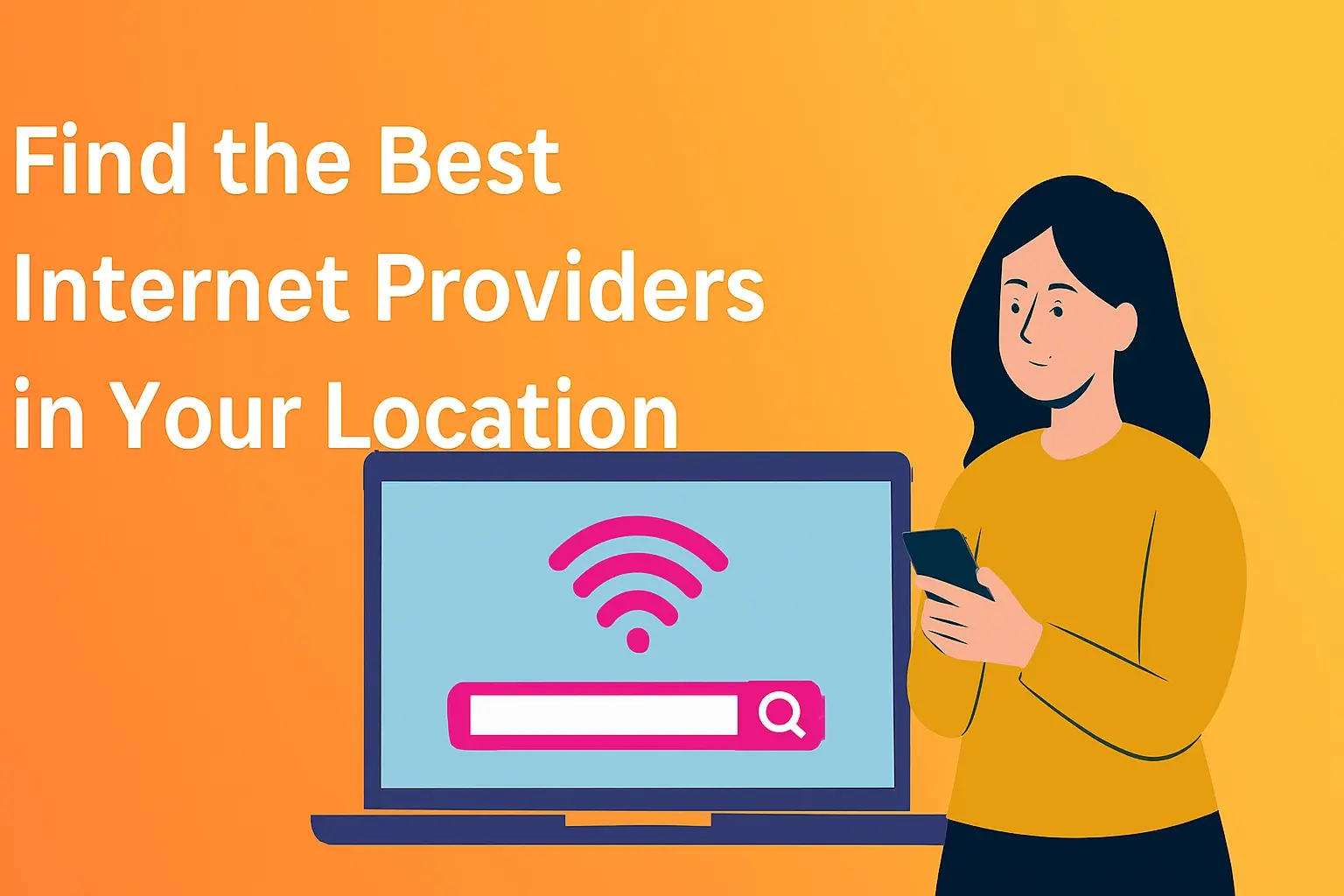Finding the Perfect Comcast Internet Plans for Your Business

Choosing the right Comcast business internet plan is crucial for operational efficiency and growth in 2025. This guide explores available options, key considerations like speed, reliability, and cost, and provides a step-by-step process to select the perfect fit for your business needs, ensuring seamless connectivity and enhanced productivity.
Unlocking Business Potential: Why Your Internet Choice Matters
In today's hyper-connected world, a robust and reliable internet connection is no longer a luxury for businesses; it's a fundamental necessity. For enterprises of all sizes, from burgeoning startups to established corporations, the quality and speed of their internet service directly impact productivity, customer satisfaction, and overall profitability. As we navigate 2025, the demands on business internet have escalated significantly. Cloud computing, video conferencing, real-time data synchronization, IoT devices, and advanced collaboration tools are now standard operational components. A subpar internet plan can lead to frustrating slowdowns, dropped connections, missed opportunities, and a significant competitive disadvantage. Comcast Business, a leading provider of internet and networking solutions, offers a diverse range of plans designed to meet these evolving needs. However, with a multitude of options, selecting the "perfect" plan can feel like a daunting task. This comprehensive guide is designed to demystify the process, providing you with the knowledge and tools to make an informed decision that will empower your business for success in the digital age. We will delve into the intricacies of Comcast's offerings, explore the latest industry trends, and equip you with a practical framework to identify the ideal internet solution tailored to your unique operational requirements and growth trajectory. Understanding the nuances of download versus upload speeds, latency, bandwidth, and service level agreements (SLAs) is paramount. For instance, a business heavily reliant on cloud storage and data backups will prioritize high upload speeds, while a company that frequently engages in video conferencing and online streaming will focus on consistent download speeds and low latency. By the end of this article, you will be well-equipped to navigate the complexities of business internet selection and confidently choose a Comcast Business plan that fuels your company's digital ambitions.
Understanding Comcast Business Internet: Key Concepts and Offerings
Comcast Business provides a spectrum of internet services built on their extensive fiber-optic network, ensuring high speeds and reliability. Understanding the core concepts behind these offerings is the first step to making an informed choice.
Core Internet Technologies
Comcast primarily leverages Cable Internet technology for its business services. This technology utilizes the same coaxial cable infrastructure used for cable television, but with dedicated bandwidth for business customers. This allows for high download speeds, making it suitable for many businesses. For enterprises with more demanding needs, Comcast also offers Fiber Optic Internet. Fiber optic connections use light signals transmitted through glass or plastic fibers, offering unparalleled speed, lower latency, and greater bandwidth capacity, making them ideal for mission-critical applications and large organizations.
Key Metrics to Consider
When evaluating internet plans, several metrics are crucial:
- Download Speed: This is the rate at which data is transferred from the internet to your devices. Higher download speeds are essential for activities like browsing websites, downloading files, streaming video, and accessing cloud applications. For 2025, businesses should aim for plans with download speeds that can comfortably handle multiple users and demanding applications simultaneously.
- Upload Speed: This is the rate at which data is transferred from your devices to the internet. High upload speeds are critical for activities such as sending large files, uploading videos, participating in video conferences with high-quality video, backing up data to the cloud, and hosting web servers. Many business plans offer asymmetrical speeds, meaning download speeds are significantly higher than upload speeds. Businesses with significant outbound data needs must pay close attention to this.
- Latency: Often referred to as "ping," latency is the time it takes for a data packet to travel from your device to a server and back. Low latency is crucial for real-time applications like online gaming, VoIP calls, and video conferencing, where delays can disrupt communication and user experience.
- Bandwidth: This refers to the maximum amount of data that can be transmitted over your internet connection in a given amount of time. It's often measured in Mbps (megabits per second) or Gbps (gigabits per second). Adequate bandwidth ensures that your connection can handle the combined usage of all your devices and applications without slowing down.
- Reliability and Uptime: This is the consistency of your internet service. Businesses need a provider that guarantees a high percentage of uptime, typically 99.9% or higher. Comcast Business often provides Service Level Agreements (SLAs) that outline guaranteed uptime and response times for technical issues.
Comcast Business Service Tiers
Comcast Business typically offers several tiers of service, often categorized by speed. While specific plan names and speeds can vary by region and availability, common offerings include:
- Business Internet Starter/Essential: Geared towards small businesses with basic internet needs, such as email, web browsing, and light cloud usage. These plans offer moderate download and upload speeds.
- Business Internet Pro/Preferred: Suitable for growing businesses that require more bandwidth for multiple users, frequent video conferencing, and more extensive cloud application usage. These plans offer significantly higher download and upload speeds.
- Business Internet Premium/Ultra: Designed for larger businesses or those with high-demand operations, such as those in creative industries, finance, or technology sectors. These plans provide the highest speeds and most robust performance, often including dedicated IP addresses and advanced features.
- Dedicated Internet Access (DIA): For the most critical business applications, Comcast offers DIA, which provides symmetrical speeds (equal download and upload), guaranteed bandwidth, and the highest levels of reliability and support, often with SLAs that guarantee near-perfect uptime.
It's important to note that Comcast Business also offers bundled solutions that can include phone services (VoIP), cybersecurity, and managed Wi-Fi, which can be cost-effective for businesses looking for an all-in-one solution.
Navigating the 2025 Landscape: Current Trends in Business Internet
The business internet landscape is in constant flux, driven by technological advancements and evolving business practices. Understanding these trends for 2025 is crucial for making a future-proof investment.
The Rise of Hybrid Work and Remote Connectivity
The widespread adoption of hybrid and remote work models, which solidified in recent years, continues to be a dominant trend in 2025. This means businesses require internet solutions that not only support robust in-office connectivity but also ensure seamless and secure access for employees working from home. For businesses, this translates to a need for higher overall bandwidth to accommodate more simultaneous connections, reliable VPN services, and potentially, enhanced cybersecurity measures to protect distributed networks. Comcast Business is responding by offering plans that can scale to meet these demands and providing tools for managing remote access securely.
Increased Reliance on Cloud Services
Cloud computing continues its exponential growth in 2025. Businesses are increasingly migrating their data storage, applications, and operational infrastructure to cloud platforms like AWS, Azure, and Google Cloud. This trend places a premium on both download and, critically, upload speeds. Efficiently uploading large datasets, collaborating on cloud-based documents in real-time, and performing regular cloud backups necessitates robust upload bandwidth. Businesses that underestimate their upload needs risk significant productivity bottlenecks. Comcast's higher-tier plans and fiber optic offerings are particularly well-suited to support these cloud-intensive operations.
The Growing Importance of Low Latency
As real-time communication and collaboration tools become more sophisticated, low latency is no longer a niche requirement but a mainstream business necessity. High-definition video conferencing, VoIP calls, online collaboration platforms, and even advanced data analytics tools perform optimally with minimal delay. In 2025, businesses are paying closer attention to latency figures when selecting internet plans, especially those in industries where split-second communication is critical, such as financial trading or remote healthcare. Fiber optic connections generally offer superior low-latency performance compared to traditional cable internet.
5G Integration and Future-Proofing
While primarily a mobile technology, the expansion of 5G networks is influencing the broader connectivity landscape. For businesses, 5G can offer alternative or supplementary connectivity options, particularly in areas where wired infrastructure is less developed. More significantly, the underlying advancements in network technology that enable 5G are also driving improvements in wired broadband. As we look ahead, businesses are seeking internet solutions that are not only sufficient for today's needs but also adaptable to future technological shifts. This includes considering providers with a roadmap for network upgrades and offerings that can accommodate increasing bandwidth demands as new technologies emerge.
Bundled Services and Managed Solutions
In 2025, many businesses are looking for streamlined solutions to manage their IT infrastructure. This has led to an increased demand for bundled services that combine internet, voice (VoIP), cybersecurity, and managed IT support. Comcast Business offers such packages, which can simplify billing, improve integration between services, and potentially reduce overall costs. Managed Wi-Fi services, which ensure optimal wireless network performance within the office, are also gaining traction as businesses recognize the importance of a seamless internal network experience.
Your Step-by-Step Guide to Finding the Perfect Comcast Business Plan
Selecting the right Comcast Business internet plan requires a systematic approach. Follow these steps to ensure you make an informed decision:
Step 1: Assess Your Business Needs
This is the most critical step. Before looking at any plans, understand what your business truly needs from its internet connection. Consider the following:
- Number of Employees: How many people will be simultaneously using the internet? Each user consumes bandwidth.
- Types of Applications Used: Are you primarily using email and web browsing, or are you heavily reliant on cloud-based CRM, video conferencing, large file transfers, or streaming services?
- Data Usage Patterns: Do you frequently upload large files or download significant amounts of data? Estimate your typical monthly data consumption if possible.
- Criticality of Uptime: How much downtime can your business afford? For some, even a few minutes of outage can be costly.
- Future Growth: Do you anticipate significant growth in employees or data usage in the next 1-3 years? It's often more cost-effective to plan for future needs now.
- Specific Service Requirements: Do you need static IP addresses for servers or specific network configurations?
Step 2: Determine Required Speeds (Download and Upload)
Based on your needs assessment, estimate the minimum required download and upload speeds. Here are some general guidelines for 2025:
- Small Office/Basic Use (1-5 employees): 50-100 Mbps download, 10-20 Mbps upload. Sufficient for email, web browsing, basic cloud apps, and occasional video calls.
- Growing Business/Moderate Use (5-20 employees): 100-300 Mbps download, 20-50 Mbps upload. Supports multiple users, frequent video conferencing, moderate cloud usage, and file sharing.
- Established Business/High Use (20+ employees): 300 Mbps - 1 Gbps+ download, 50 Mbps - 100 Mbps+ upload. Essential for heavy cloud reliance, large file transfers, high-definition video conferencing, multiple simultaneous users, and demanding applications.
- Mission-Critical/Enterprise: 1 Gbps+ symmetrical speeds (often via Fiber or DIA). For businesses where downtime is unacceptable and high-volume, real-time data transfer is constant.
Remember to consider the peak usage times. If everyone in your office uses video conferencing simultaneously at 2 PM, your connection needs to handle that load.
Step 3: Check Availability in Your Area
Comcast's service availability, especially for higher-speed fiber optic plans, varies by location. Visit the Comcast Business website or contact their sales team directly to check which plans and speeds are available at your specific business address. This will narrow down your options considerably.
Step 4: Compare Plan Features and Pricing
Once you know what's available, compare the specific plans. Look beyond just the advertised speeds:
- Contract Length: Most business plans require a contract (typically 1-3 years). Understand the terms and any early termination fees.
- Installation Fees: Are there upfront costs for setting up the service?
- Equipment Rental: Does the plan include modem/router rental, or do you need to purchase your own?
- Bundled Services: Are there discounts for bundling internet with phone or other services?
- Service Level Agreements (SLAs): What guarantees are provided regarding uptime, latency, and support response times?
- Data Caps: While less common for business plans, verify if any data caps apply.
Step 5: Consider Add-Ons and Advanced Services
Depending on your business's specific needs, you might require add-ons such as:
- Static IP Addresses: Necessary for hosting servers, running VPNs, or certain security applications.
- Managed Wi-Fi: Professional setup and management of your office wireless network.
- Cybersecurity Solutions: Enhanced protection against online threats.
- Business Phone Services (VoIP): Integrated voice solutions.
Step 6: Consult with a Comcast Business Representative
Once you have a clear understanding of your needs and have identified a few potential plans, it's highly recommended to speak directly with a Comcast Business sales representative. They can provide the most accurate information on pricing, availability, and specific plan details for your location. Don't hesitate to ask questions and negotiate terms. Mentioning competitor offers can sometimes lead to better pricing.
Step 7: Review the Contract Carefully
Before signing, thoroughly read and understand the entire contract. Pay close attention to the:
- Contract duration
- Monthly charges (including any promotional pricing and what the price will be after the promotion ends)
- Installation and equipment fees
- Service Level Agreements (SLAs)
- Early termination penalties
- Data usage policies (if applicable)
Ensuring you understand all terms will prevent surprises down the line.
Comcast Business Internet Tiers: A Comparative Analysis
Comcast Business offers a range of plans designed to cater to different business sizes and needs. While specific names and speeds can vary by region and are subject to change, here's a general comparative analysis of typical tiers you might encounter in 2025. It's crucial to verify the exact offerings available at your location.
| Feature | Business Internet Starter/Essential (Example) | Business Internet Pro/Preferred (Example) | Business Internet Premium/Ultra (Example) | Dedicated Internet Access (DIA) (Example) |
|---|---|---|---|---|
| Target Audience | Very small businesses, home offices, startups with basic needs. | Small to medium-sized businesses, growing companies with moderate internet usage. | Medium to large businesses, high-demand operations, tech-focused companies. | Enterprise-level businesses, mission-critical applications, data centers. |
| Typical Download Speeds | Up to 100 Mbps | Up to 300 Mbps | Up to 1 Gbps (1000 Mbps) | 1 Gbps to 10 Gbps+ (Symmetrical) |
| Typical Upload Speeds | Up to 10 Mbps | Up to 20 Mbps | Up to 50 Mbps | 1 Gbps to 10 Gbps+ (Symmetrical) |
| Latency | Standard | Good | Very Good | Excellent (Lowest) |
| Reliability/Uptime Guarantee | Standard | High | Very High | Highest (Often 99.999% with SLA) |
| Static IP Addresses | Typically Not Included (Optional Add-on) | Optional Add-on | Often Included or Available | Included (Multiple) |
| Typical Contract Length | 1-3 Years | 1-3 Years | 1-3 Years | 1-5 Years |
| Bundled Services Availability | Yes | Yes | Yes | Yes (often with advanced networking solutions) |
| Estimated Monthly Cost (Varies Greatly) | $70 - $120 | $100 - $200 | $150 - $300+ | $500 - $2000+ |
Note: These are illustrative examples for 2025. Actual speeds, pricing, and features will vary based on your specific location, current promotions, and negotiation. The "Estimated Monthly Cost" is a rough guide and can fluctuate significantly. Always get a personalized quote.
Best Practices for Maximizing Your Comcast Business Internet Investment
Once you've selected and installed your Comcast Business internet plan, implementing best practices will ensure you get the most value and performance from your service.
- Optimize Your Internal Network: A fast internet connection is only as good as the network within your business. Ensure you have sufficient bandwidth on your internal network, use quality routers and switches, and consider upgrading to Wi-Fi 6 or Wi-Fi 6E for better wireless performance in 2025. Regularly update firmware on all network devices.
- Monitor Your Bandwidth Usage: Understand how your bandwidth is being consumed. Use network monitoring tools to identify applications or users that are consuming excessive bandwidth. This can help you optimize usage and identify potential issues before they impact performance. Comcast Business may offer some monitoring tools or integrations.
- Prioritize Critical Applications: If your plan allows, configure Quality of Service (QoS) settings on your router to prioritize traffic for critical applications like VoIP, video conferencing, or essential business software. This ensures that these applications receive the necessary bandwidth even during peak usage times.
- Secure Your Network: Implement robust security measures, including strong passwords, firewalls, and up-to-date antivirus software. If you have remote workers, ensure they are using secure VPN connections. Consider Comcast's cybersecurity add-on services if you lack in-house expertise. A secure network prevents malicious traffic from consuming your bandwidth and compromising your data.
- Regularly Review Your Plan: Business needs evolve. At least once a year, review your internet usage and compare it against your current plan. Are you consistently exceeding your bandwidth? Are you paying for more speed than you need? Contact Comcast Business to discuss potential upgrades or downgrades to ensure your plan remains optimal.
- Leverage Bundled Services: If you use Comcast Business for phone or other services, ensure they are integrated efficiently. Bundling can often lead to cost savings and simplified management.
- Understand Your SLA: Familiarize yourself with the terms of your Service Level Agreement. Know what guarantees are in place for uptime and support response times. This empowers you when you need to escalate an issue with Comcast.
Advanced Strategies for Bandwidth Management and Future-Proofing
For businesses looking to go beyond basic internet functionality, advanced strategies can optimize performance and prepare for future demands.
Load Balancing and Redundant Connections
For businesses that cannot afford any downtime, implementing load balancing with two separate internet connections (e.g., Comcast Business and a secondary provider like a fiber or fixed wireless option) is a strategic move. A load balancer distributes internet traffic across both connections, improving overall throughput and providing a failover in case one connection fails. This significantly enhances business continuity.
SD-WAN (Software-Defined Wide Area Network)
SD-WAN solutions are becoming increasingly popular for businesses with multiple locations or significant cloud usage. SD-WAN intelligently routes traffic across different connections (including Comcast Business) based on application priority and network conditions. This optimizes performance for cloud applications, improves reliability, and can reduce costs by leveraging less expensive connections when appropriate. Comcast Business offers SD-WAN solutions that can integrate with their internet services.
Dedicated Internet Access (DIA) for Mission-Critical Needs
As mentioned earlier, for the most demanding applications, Comcast's Dedicated Internet Access (DIA) is the gold standard. DIA offers guaranteed symmetrical bandwidth, a fixed IP address, and the highest levels of service and support. This ensures that your critical business operations, such as hosting servers, running real-time trading platforms, or supporting large-scale





